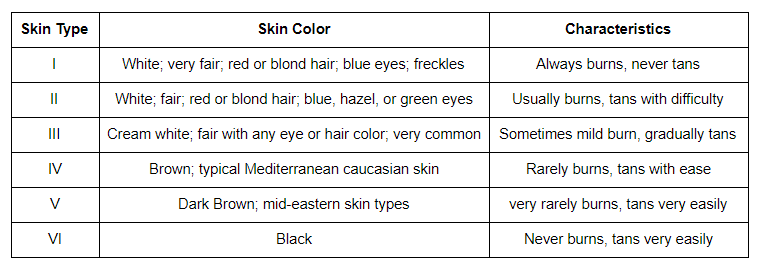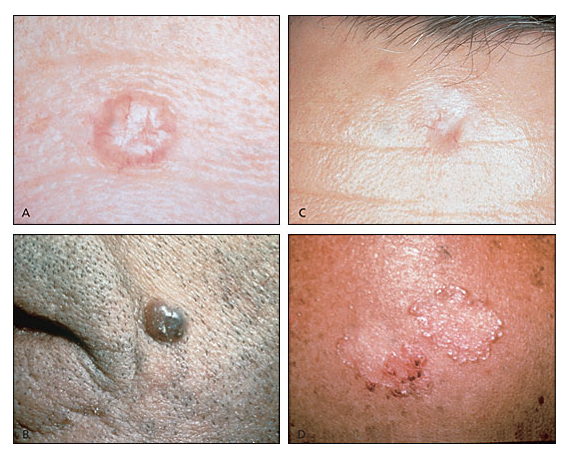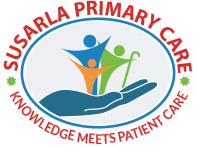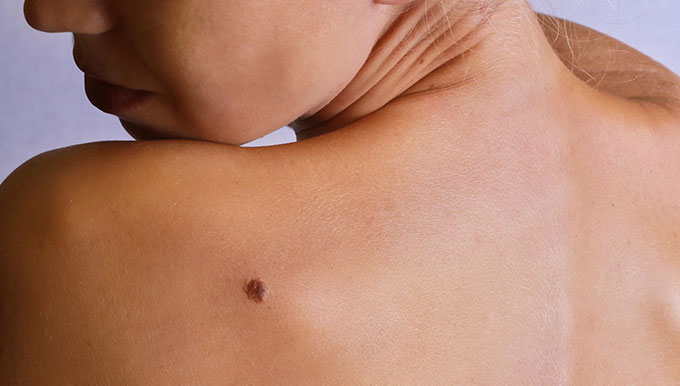Skin cancer has been on the rise since the early 1990s. It is thought the increase in skin cancer is due to increased exposure to the sun and depletion of the ozone layer. One out of 6 Americans will develop skin cancer at some point. Skin cancer accounts for 33% of all cancers in the United States. Most skin cancers are not harmful. However, the most harmful skin cancer, malignant melanoma is on the rapid rise in the United States.
The most frequent question patients ask me is: “Dr. Susarla, can you take a look at this skin discoloration or mole on my face and/or body?”
As the weather is getting warmer, many of us will be doing outdoor activities thus exposing our skin to harmful UV light. This UV light can lead to many different types of skin diseases and skin cancer.
So now you may ask “Am I at risk for skin cancer?”
There are three main predisposing factors to skin cancer:
1. Fair skin
2. Poor tanning ability
3. Predilection to burn
Another good way to assess your risk for skin cancer is to use the Sun Reactive Skin Type Classification or Fitzpatrick Classification.

Tanning ability is based on skin condition 45 minutes of sun exposure after winter or a prolonged period of no sun exposure. Types I and II are at highest risk for skin cancer.
Screening
Currently, the American Academy of Dermatology recommends annual skin cancer screening for all patients. However, the United States Preventive Health Task Force states that there is insufficient evidence for or against routine skin examinations. Therefore, I recommend you see your primary care physician on an annual basis. You should discuss your occupation, lifestyle and risk factors with your physician. You should also show any abnormal lesions on your skin to your physician. Your physician will decide on when skin cancer screening is most appropriate for you.
Diagnosis
There are two main types of skin cancer: nonmelanoma and melanoma skin cancer. Typical nonmelanoma skin cancers are basal cell and squamous cell cancer. These skin cancers are easily treated and are very rarely associated with metastatic disease.

Common types of basal skin cancer are found above. A) Nodular, B) Pigmented, C) Sclerosing, and D) Superficial
The nonmelanotic skin cancers can be treated with a simple biopsy and excision of the cancer. You should see your primary care physician regarding the best treatment option for you. Other therapies used occasionally include oral retinoids; topical tretinoin; carbon dioxide and neodynium-YAG lasers; topical 5-FU; and, for inoperable and metastatic tumors, chemotherapy.
Melanoma skin cancer is a very serious life threatening skin cancer. The most common skin cancer in this group is malignant melanoma. If you have a suspicious pigmented lesion the ABCD mnemonic is very helpful.
The ABCDE Checklist for Detecting Cutaneous Melanoma
A – Asymmetry – One half of the mole doesn’t math the other.
B – Borders – Irregular border.
C – Color – Color than is not uniform.
D – Diameter – Diameter greater than 6mm.
E – Evolving Size – How has it changed?
note: Biopsy should be strongly considered if one or more nonreassuring elements are present
Treatment options vary depending on the type of malignant melanoma. You should discuss this with your primary care physician.
Prevention
The best prevention is to stay out of the sun!! Also refrain of smoking, tanning beds, occupational and environmental hazards if possible. If you are in the sun, please wear sunscreen! A good sunscreen only needs to be SPF (sun protective factor) 15 or 30. You should apply sunscreen every 2 hours. A good skin care routine is helpful as well. I recommend talking to your doctor about a good skin care line.

